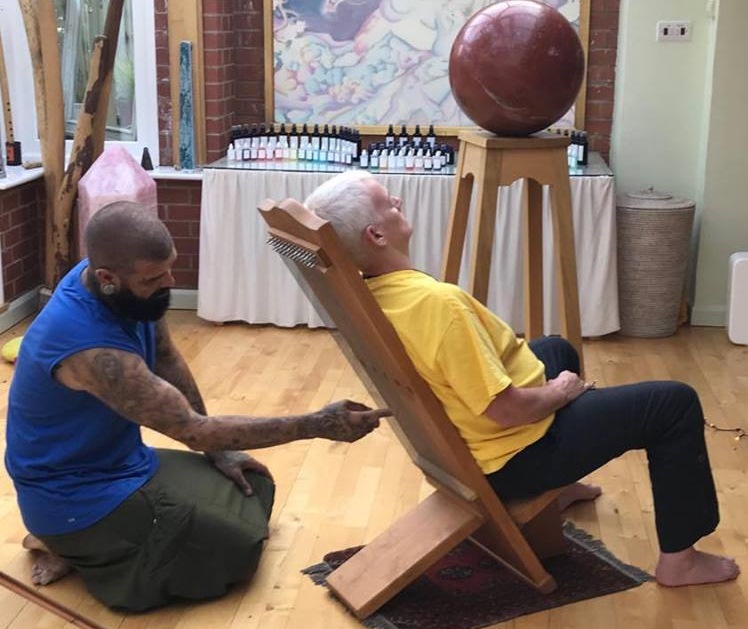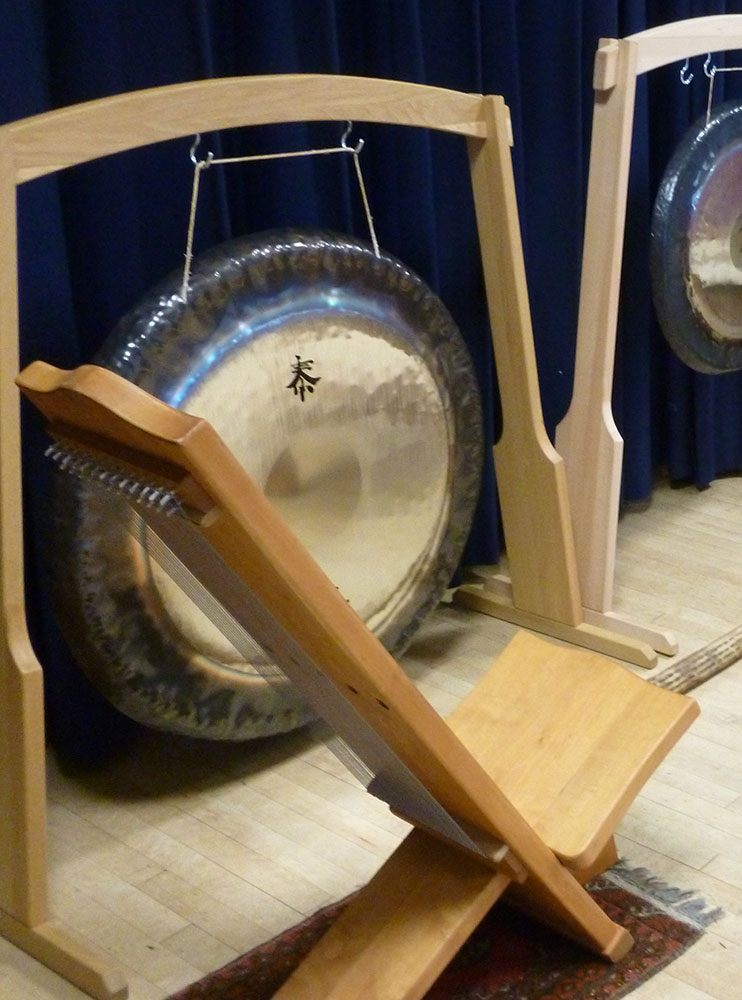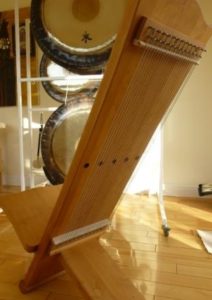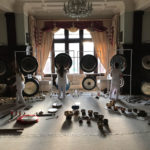As part of our one on one sound healing sessions we incorporate the magnificent Monochord Chair. At the beginning of a session a recipient will sit comfortably with their spine aligned against the high wooden back, feet on the floor, whilst Sarah gently plays the back of the chair, the strung Monochord. She will play it for at least ten minutes and recipients report any of the following: deep relaxation, a release of tension, feeling vibrations moving not only up the spine but throughout the body (as the vibrations from the Monochord Chair work on the Central and Autonomic Nervous System), random thoughts arising from seemingly old memories, seeing colours and imagery and a general feeling of wellbeing. Because a lot of tension has often been released by this brief healing experience, recipients will then move onto the treatment couch or yoga mat to experience the remainder of their sound healing session and slip quite quickly and easily into a very deep state of relaxation.
Sarah also incorporates the Monochord into many group healing sessions. Participants take it in turn to sit in the chair as the group tones or chants or beams Reiki energy to the person, and Sarah plays the Monochord for the participant. This can be a truly beautiful experience and many report feelings of bliss and true peace, as well as feeling such depth of love from the group who create an almost celestial choir. This is a collective group experience and all other members of the group report feelings of wellbeing from the session.


Although the Monochord chairs and tables are a fairly recent addition to the sound healing world, the Monochord is actually an ancient musical instrument which consisted of one string (hence “mono”) stretched over a hollow sound box held taut by small pegs at each end of the box on a moveable bridge. History tells us that the Monochord was invented in ancient Greece around 500 BC. and was used by Pythagoras as an instrument to study and determine musical intervals. In the 11th Century it was used as a teaching tool to assist in choral chanting by Guido of Arezzo (considered to be the inventor of musical notation). In the 19th Century it was often used for tuning organs.
 The original Monochord could be plucked, hit or played with a bow. The Monochord Chair does actually have more than one string, 25 in total, with each one tuned to the same note and is generally played by hand. Playing and movement of the chair can result in the instrument becoming out of tune, so it is necessary to tune the chair regularly to ensure it sounds pleasing and has the required effect. This is done by turning the pegs individually with a tuning key until each string is tuned to the required note.
The original Monochord could be plucked, hit or played with a bow. The Monochord Chair does actually have more than one string, 25 in total, with each one tuned to the same note and is generally played by hand. Playing and movement of the chair can result in the instrument becoming out of tune, so it is necessary to tune the chair regularly to ensure it sounds pleasing and has the required effect. This is done by turning the pegs individually with a tuning key until each string is tuned to the required note.
Besides the chair pictured here which is very portable, it is possible to purchase single Monochords, Monochord Rocking Armchairs and also Monochord Tables. The latter two are heavier pieces of equipment and the table in particular isn’t something which is easy to move around, but does make for an impressive instrument if you have a dedicated space. Sarah personally through trying the different types of sound healing monochord furniture recommends the chairs, finding the vibrations more easily felt by the recipients when seated, and easier to play than the Monochord table.


